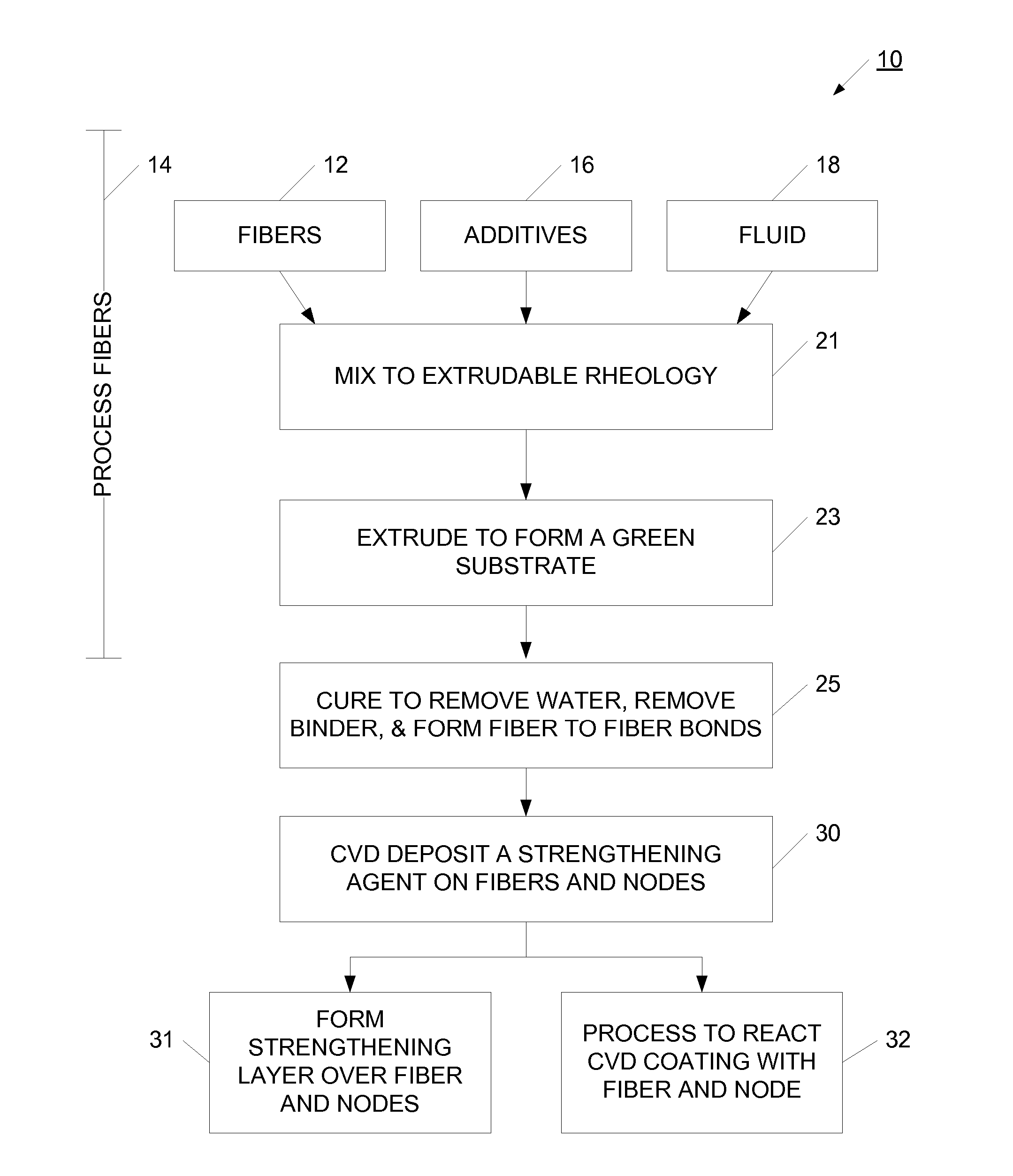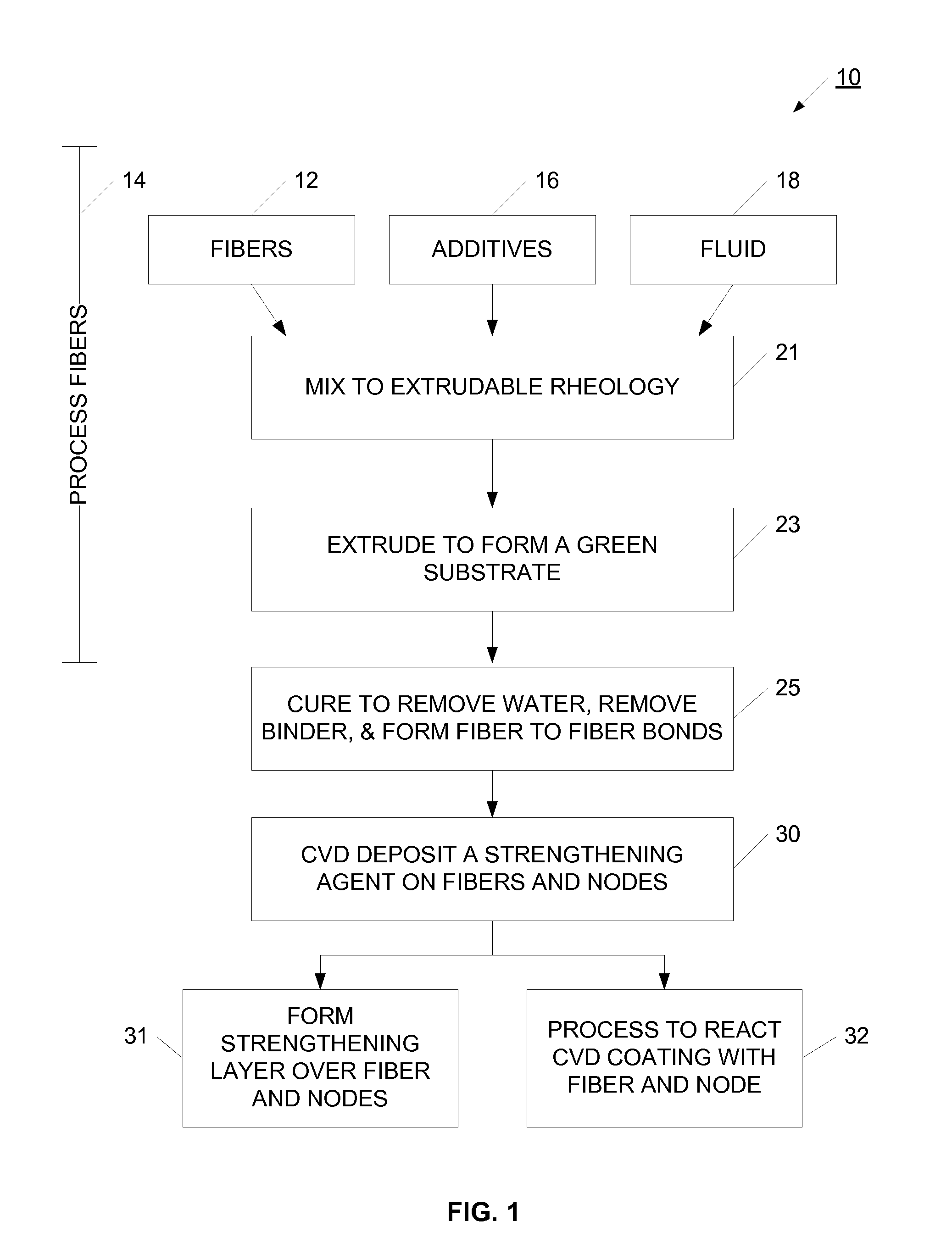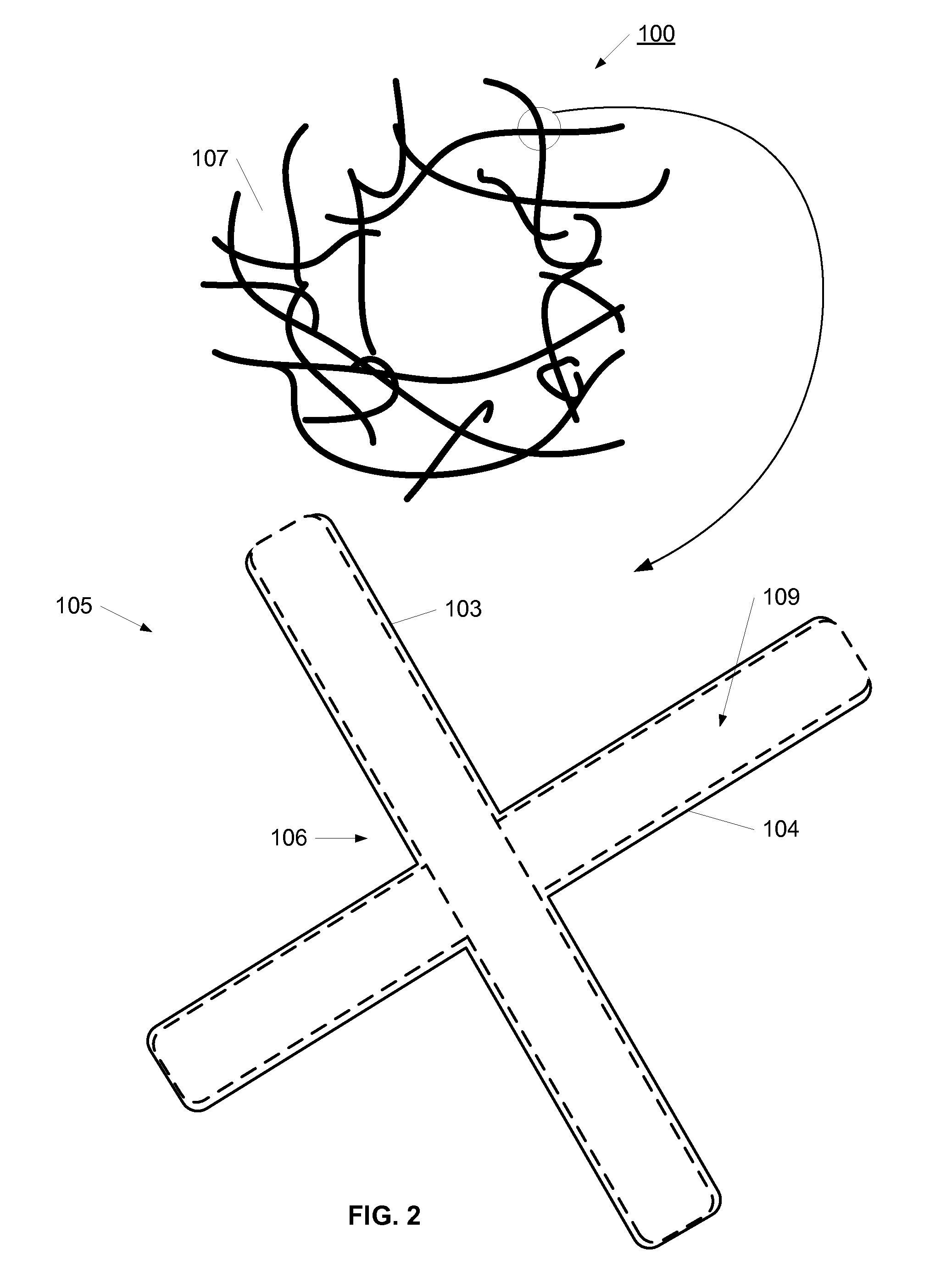Method and apparatus for strengthening a porous substrate
a technology of porous substrates and strengthening methods, applied in the direction of chemistry apparatus and processes, coatings, layered products, etc., can solve the problems of not being able to identify the open pore network substrates, not being able to achieve particularly accurate characterization, and limited permeability, so as to achieve the effect of increasing the strength of the substrate, high porosity and high strength characteristics
- Summary
- Abstract
- Description
- Claims
- Application Information
AI Technical Summary
Benefits of technology
Problems solved by technology
Method used
Image
Examples
Embodiment Construction
[0022] Detailed descriptions of examples of the invention are provided herein. It is to be understood, however, that the present invention may be exemplified in various forms. Therefore, the specific details disclosed herein are not to be interpreted as limiting, but rather as a representative basis for teaching one skilled in the art how to employ the present invention in virtually any detailed system, structure, or manner.
[0023] Referring now to FIG. 1, a process 10 for strengthening a porous substrate is illustrated. In the example illustrated in FIG. 1, the substrate is manufactured using an extrusion process, and then the extruded substrate is strengthened using a CVD (chemical vapor deposition process). Although process 10 uses an extrusion process to provide the substrate, it will be appreciated that other manufacturing processes may be used. For example, the substrate may be provided using a casting, broaching, or other process. As illustrated, process 10 uses an extrusion ...
PUM
| Property | Measurement | Unit |
|---|---|---|
| porosity | aaaaa | aaaaa |
| porosities | aaaaa | aaaaa |
| porosity | aaaaa | aaaaa |
Abstract
Description
Claims
Application Information
 Login to View More
Login to View More - R&D
- Intellectual Property
- Life Sciences
- Materials
- Tech Scout
- Unparalleled Data Quality
- Higher Quality Content
- 60% Fewer Hallucinations
Browse by: Latest US Patents, China's latest patents, Technical Efficacy Thesaurus, Application Domain, Technology Topic, Popular Technical Reports.
© 2025 PatSnap. All rights reserved.Legal|Privacy policy|Modern Slavery Act Transparency Statement|Sitemap|About US| Contact US: help@patsnap.com



